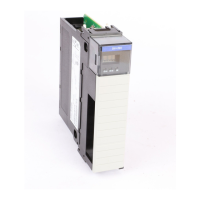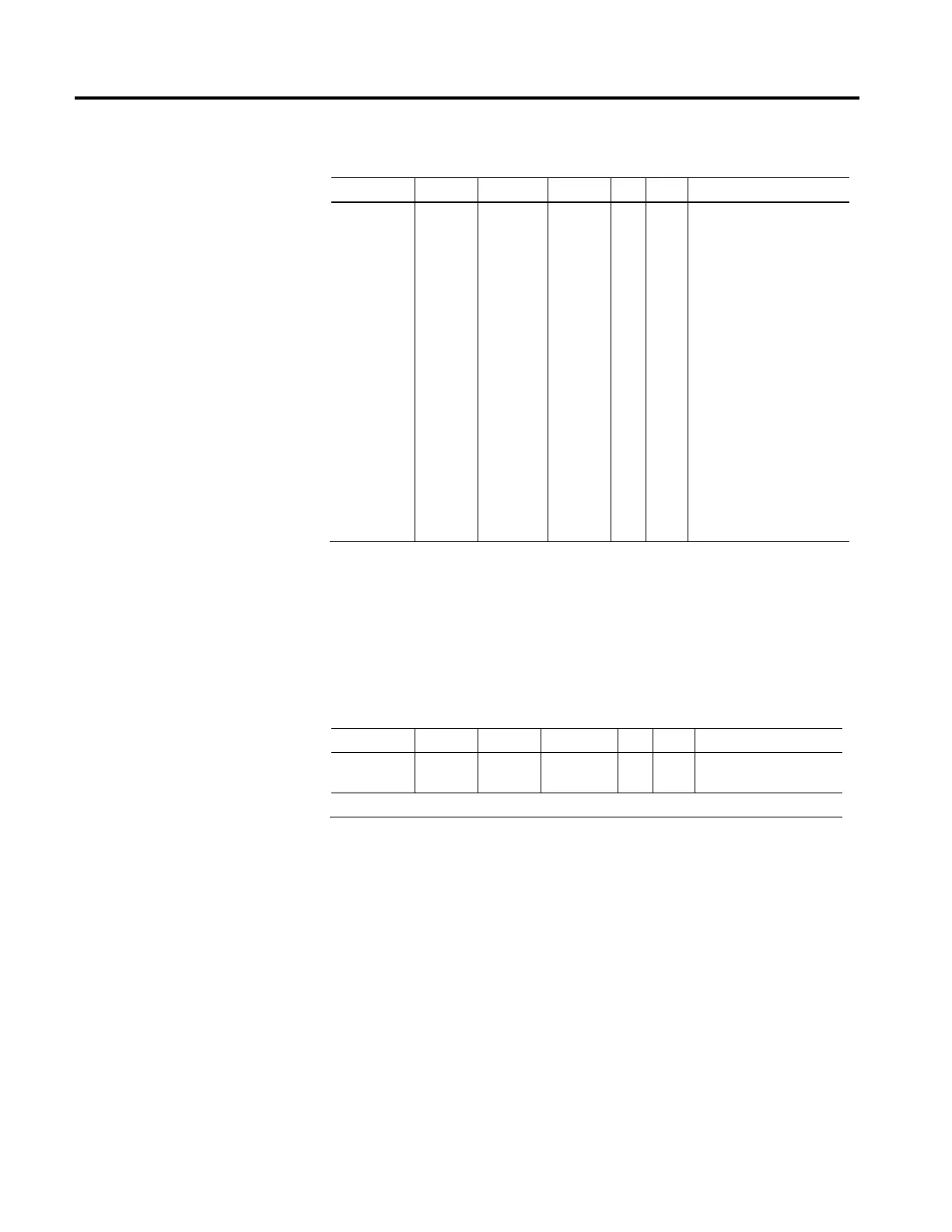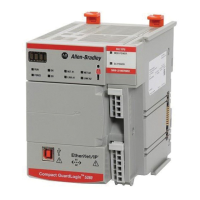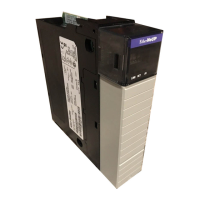Rockwell Automation Publication MOTION-RM003I-EN-P - February 2018 379
Motion Unit
Usage Access Data Type Default Min Max Semantics of Values
Required - All Set/ GSV USINT 0 - - Enumeration
0 = Motor Rev
1 = Load Rev
2 = Feedback Rev
3 = Motor mm
4 = Load mm
5 = Feedback mm
6 = Motor inch
7 = Load inch
8 = Feedback inch
9 = Motor Rev/s
10 = Load Rev/s
11 = Motor m/s
12 = Load m/s
13 = Motor inch/s
14 = Load inch/s
15...255 = Reserved
The Motion Unit attribute determines the unit of measure used to express the
Motion Resolution used by motion planner functions. A Motion Unit is the
standard engineering unit of measure for motion displacement. Motion Units may
be configured as Revs, Inches, or Millimeters depending on the specific
application.
Motion Resolution
Usage Access Data Type Default Min Max Semantics of Values
Required - All Set/ SSV# DINT
Default Motion
Resolution
1 2
31
-1 Motion Counts / Motion Unit
# Indicates the attribute cannot be set while the tracking command (Tracking Command bit in CIP Axis Status is true).
The Motion Resolution attribute is an integer value that determines the number
of Motion Counts per Motion Unit used by the scaling function to convert
between Motion Counts and Feedback Counts. This attribute determines how
many Motion Counts there are in a Motion Unit. A Motion Count is the
fundamental unit of displacement used by the Motion Planner and a Motion Unit
is the standard engineering unit of measure for motion displacement. Motion
Units may be configured as Revs, Inches, or Millimeters depending on the specific
application.
All command position, velocity, and acceleration data is scaled from the user's
preferred Position Units to Motion Units for the Motion Planner based on the
Motion Resolution and Conversion Constant. The ratio of the Conversion
Constant to Motion Resolution determines the number of Position Units in a
Motion Unit as described using the following formula.

